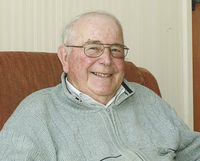Features
Mgr John Broadbent
3 October 2011
St Francis of Assisi is one of the most popular saints in the Church, not only for Catholics. Certainly no other saint has so appealed to Protestants and even to non-Christians.
 Francis’ love of animals strikes a chord with so many and on his feast day (October 4) church services are held worldwide to which many animals and pets are brought for blessing.
Francis’ love of animals strikes a chord with so many and on his feast day (October 4) church services are held worldwide to which many animals and pets are brought for blessing.
More importantly, by his poverty and example he ‘did more than any other man to save the medieval church from decay and revolution’ (David Knowles).
Early life
St Francis was born in Assisi in Umbria around 1181. His father, Peter Bernadone, was a merchant and his mother was said to have had Provencal blood. They were among a growing middle class in the middle ages. Much of Peter’s trade was in France, and his son, having been born while he was in that country, was called Francesco, the Frenchman, though given the name ‘John’ in baptism.
In his youth, Francis was captured by ideas of romantic chivalry. He had plenty of money and spent it lavishly. Bent on enjoying himself, he was uninterested in his Father’s business or in formal learning though even in the early days he was generous, especially to the poor.
Imprisonment and illness
War broke out between his city and neighbouring Perugia, and Francis was taken prisoner by the Perugians. After a year in prison he was struck down by a long and dangerous sickness which turned his mind towards more serious matters.
He began to see that spiritual warfare for Christ is won by mortification and victory over oneself. Riding one day on the plain of Assisi, Francis met a leper whose sores horrified him. Yet he dismounted, and as the leper stretched out his hand to receive the alms, Francis kissed the man.
One day, as he was praying in the church of San Damiano outside the walls of Assisi, he thought he heard a voice coming from the crucifix which said three times, ‘Francis, go and repair my house which you see is falling down’.
A symbol to the church
Francis, noting that the church was old and dilapidated, thought the Lord was ordering him to repair it. He later realised, however, as did the pope who heard his story, that his example of poverty was a sign to a church which was weighed down with riches invested in palatial buildings, vestments, jewelled statues and images and needed to learn more simplicity and humility.
A family schism
To restore the old church of San Damiano, Francis took a horse-load of cloth from his home and sold it. His father beat him unmercifully but when Francis persisted in his plan, his father threatened to disinherit him if he did not give the money back and go home. Francis never worried about being disinherited.
The Bishop of Assisi, Guido, persuaded Francis to return the money. Francis, unmoved by his father’s threat, added, ‘The clothes I wear are also his,’ and stripped off, giving his clothes to his father saying, ‘Hitherto I have called you “father” on earth; but now I say “Our Father who art in Heaven’.”
The bishop found a garment belonging one of his labourers and gave it to Francis, who made a cross on it and put it on.
Francis went to the city of Gubbio where there was a wolf who used to rob and eat the citizens. Francis blessed and tamed him and the wolf became a pet. On his return to San Damiano, a follower, St Clare, founded a community of nuns which became known as The Poor Clares. The congregation still has a monastery there.
A spiritual classic, The Flowers of St Francis, written some 100 years after St Francis’ death documents these and other stories. Many began to follow Francis and accompanied him to Rome in 1210 to have his (Franciscan) Rule approved by Pope Innocent III.
His communities increased and spread throughout Italy, France, England and Spain. Thousands joined. He based his order at his Church of St Mary of the Angels in Assisi. The church of the same name in Wellington was named by the city’s first priest, a Capuchin Franciscan, who founded the first Catholic Church more or less on the present site. St Francis begged his brethren never to own, but rather rent, a monastery. They were to live off alms and beg for their food but not for money.
In later years, Francis tried to convert Muslims in Egypt and North Africa and many admired his simple and committed life. Returning to Italy, he found some of the brothers in rich monasteries and dining well – the pope had recommended a more usual monastic style so Francis retired to Mount Alvernia to live a simple life. While there, he received the stigmata or wounds of Christ on his body. These gave him great suffering but Francis still saw anyone who came to him and worked many miracles. At Alvernia he wrote his great poem ‘Praise of the Most High God’.
When he died on October 3, 1226, many gathered around his bed. He had asked to be buried in the Cemetery of Criminals, but the friars took him for burial in his own church where his body still rests.
The three branches of Franciscans – Friars Minor (most Franciscans in Australia and New Zealand), Capuchins and Friars Conventuals – continue his spirit and work today. Together they are the largest order of men in the church.
Other articles of saints in church history
St Bernard of Clairvaux
Blessed Urban II
St Athanasius
Ss Agape, Chionia and Irene, virgins and martyrs
The martyrdom of Perpetua, Felicitas and companions